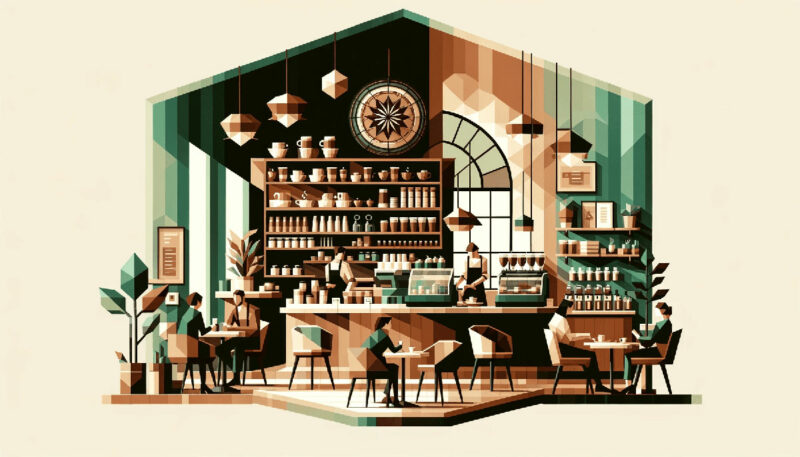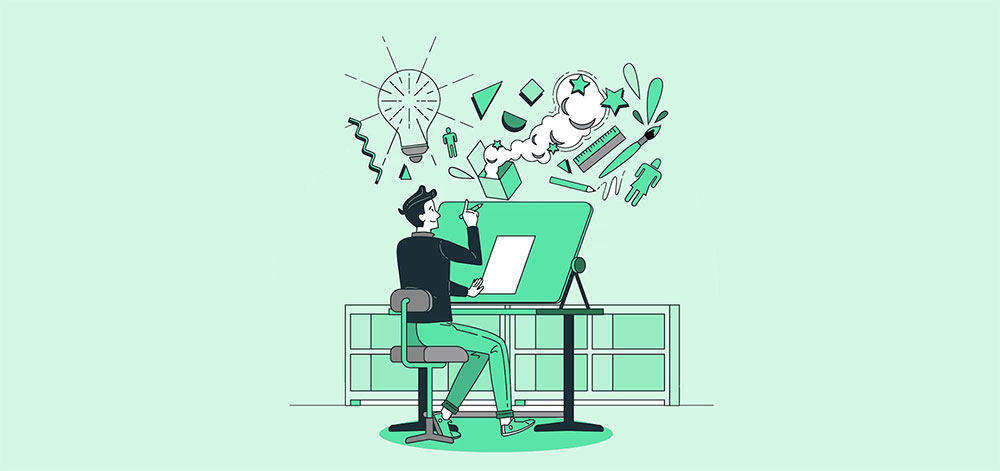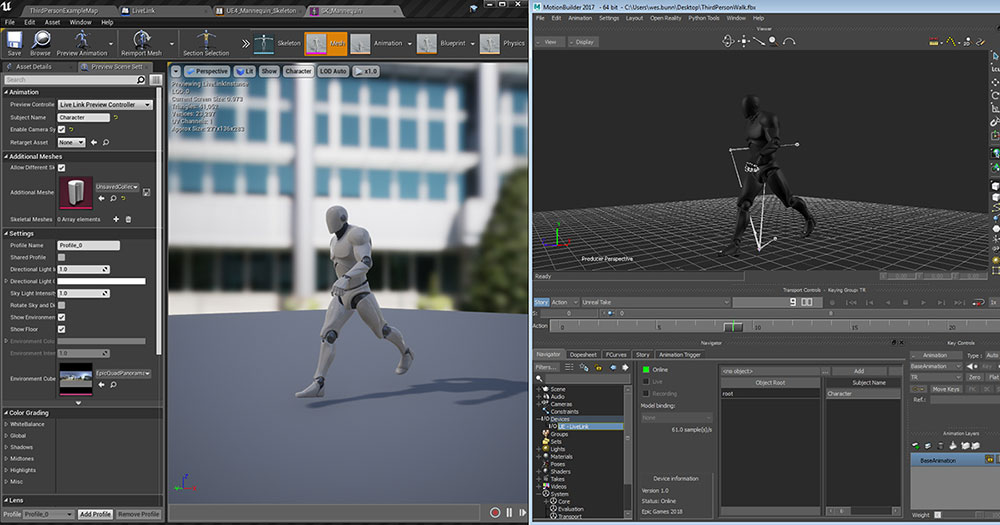Making Sense of Data: UX Designer vs Data Analyst

Imagine painting a masterpiece. One artist employs broad strokes of intuition, captivated by the user’s journey. Another relies on meticulous brush dabs of data, uncovering hidden narratives in numbers.
Welcome to the tableau where the vibrant UX designer palette clashes and harmonizes with the intricate data analyst schematics.
This article delves into the kinetic realm where empathy meets empiricism. Here’s the spiel: understanding the distinction and synergy between these roles is vital, folks.
It’s about grasping why a design strategy empowered by quantitative data and user research can elevate your game. It’s about how information architecture entwines with data visualization, knitting a tale of two domains.
By the final punctuation mark, you’ll unlock insights into balancing user storyboards and data-driven decision-making. You’ll uncover how prototyping tools can shake hands with analytics software.
Peek behind the curtain of interface design and big data, where every shade of insight crafts the ultimate user experience.
You’re in for a vivid exploration that begins with the first click, leading to informed conclusions without a byte of boredom.
Understanding the Roles
Data Analyst
Definition and Core Responsibilities

Ever scrolled through a website and wondered how they knew exactly what you were interested in?
Or how your favorite online store seems to always have the right recommendations? Enter the world of a Data Analyst.
These guys are the ninjas behind all that. Their core responsibility?
They dive deep into data, making sense of numbers, trends, and patterns, and help businesses make informed decisions. So basically, they’re the detectives of the digital world.
Tools and Technologies Used
Alright, so what’s in the toolbox of these detectives?
- SQL for database stuff
- Python or R for all the number-crunching
- Data visualization tools like Tableau or Power BI to make data look pretty and understandable
- Spreadsheets, because who can live without them, right?
Skills and Qualifications RequiredYou
think you’ve got what it takes to be one? Here’s what’s usually on the checklist:
- A knack for numbers and patterns – you gotta love them.
- Problem-solving skills – because data can be messy.
- Communication skills – not all heroes wear capes, but they do need to explain their findings.
- Often a degree in something like statistics, computer science, or even business.
UX Designer
Definition and Core Responsibilities

You ever been on a website or app and thought, “Woah, this feels smooth”? That’s the magic touch of a UX Designer.
UX stands for ‘User Experience’, and these folks are all about making sure you have a good time while you’re online. Their goal? To make sure that everything you interact with is intuitive, smooth, and, well, just makes sense.
In the realm of digital product design, UX designers play a crucial role. This discipline focuses on creating engaging interfaces that cater to the end-user’s needs, incorporating principles of design and psychology to enhance user satisfaction and interaction.
Tools and Technologies Used
Now, let’s peek into a UX Designer’s toolkit:
- Sketch or Figma for designing those sleek interfaces.
- Axure RP or InVision for prototyping – gotta test before it goes live.
- User testing platforms, because what’s a design if it doesn’t work for the user?
- Mood boards, color palettes, and wireframes – yeah, it’s as artsy as it sounds.
Skills and Qualifications Required
Dreaming of becoming a UX magician? Here’s your spellbook:
- A creative mind – you’re basically crafting experiences.
- Empathy – because you’ve got to get into the user’s shoes.
- Technical know-how, especially in the design software space.
- Often, a degree in design or human-computer interaction. But, portfolios speak louder than degrees in this world.
The Interplay of UX/UI Design and Data Analytics
So, you’ve heard of this whole UX designer vs data analyst thing, right? But let me spill some tea: they’re like the Batman and Robin of the digital world.
One’s not complete without the other. Let’s deep dive into this dynamic duo.
How Data Informs Design Decisions
Ever noticed how your favorite app seems to just get you? That’s no accident. It’s all thanks to data.
When you click, swipe, or even hover, you’re leaving digital breadcrumbs. Data analysts pick these up and serve them on a silver platter to UX designers.
These breadcrumbs? They’re like golden nuggets. They help UX designers understand what you love, what makes you go “meh”, and what you downright hate.
So, every button placement, every color choice, and even the way the content is laid out? All driven by the stories these numbers tell.
The Role of UX/UI Design in Data Visualization
Imagine a world where you had to look at boring spreadsheets all day. Yawn, right? Thanks to UX/UI designers, that’s not the case.
They jazz up the data, making it visually appealing and easier to understand.
Charts, infographics, interactive dashboards – these aren’t just for aesthetics.
They’re tools that help businesses, and even everyday folks, make sense of the complex world of data. The magic happens when art meets numbers.
Comparing Data Analyst and UX Designer Roles
Man, the digital age has truly blessed us with some cool job titles. UX designer vs data analyst – sounds like a sci-fi showdown.
But what’s the real deal with these roles?
Job Outlook and Demand
Growth Projections for Both Roles
Tech’s booming, and with it, the demand for both UX designers and data analysts is shooting up.
Businesses finally get it: to thrive, you need to understand your users and give them a digital playground they love.
Industries Where They Are Most Sought After
From e-commerce giants to funky startups, and even old-school industries trying to catch up with the digital age – everyone’s on the hunt.
Finance, healthcare, entertainment, you name it. Every sector is eyeing these pros to amp up their game.
Salary Expectations
Average Salaries for Both Roles
Not gonna lie, both these gigs can fetch you a neat package.
Data analysts, with their number-crunching skills earn about $82k/year, and UX designers earn about $95k/year. In short, both have salaries that’ll make your bank account smile.
Factors Affecting Salary
But hey, it’s not just about the title. Where you work, how experienced you are, and the complexity of your projects – all these can pump up (or bring down) the digits on your paycheck.
Work Environment and Culture
Typical Work Settings
Both these champs are usually found in comfy office spaces, armed with their computers.
But with the whole remote work trend, don’t be surprised to find a UX designer chilling on a beach, or a data analyst crunching numbers in their PJs.
Collaboration with Other Departments and Teams
Solitude? That’s for monks. Both these roles demand constant chit-chat.
UX designers often pair up with developers, marketers, and even customer support. Data analysts? They’re the go-to pals for almost every department. After all, who doesn’t love some good insights?
Job Satisfaction and Growth Opportunities
The digital realm keeps evolving, and with it, the roles of a UX designer and data analyst. New tools, techniques, and challenges keep the job exciting.
And as for growth? Sky’s the limit.
From leading teams to becoming key decision-makers in companies, the road ahead is paved with gold. If the digital world was an ocean, these roles would be the big fish. No doubt.
Choosing the Right Career Path
So, the big showdown: ux designer vs data analyst. Trust me, I get the confusion. It’s like choosing between pizza and tacos.
Both so good, but in different ways. Let’s dive deep into the sauce and crunch of these two roles.
Assessing Personal Interests and Skills
Analytical vs. Design-Oriented Mindset
Okay, real talk. When you see a pile of data, do your eyes sparkle or do you start daydreaming about colors, layouts, and visuals?
If numbers get you all hyped up and you dream in spreadsheets, the data analyst route might be your jam. But, if the thought of crafting a seamless user journey on a website or app makes your heart race, the UX designer route is calling your name.
Passion for Data vs. User Experience
Now, imagine this: You’re at a party. What’s the story you’re itching to tell?
Is it about how you unraveled the mysteries of user behaviors from raw data? Or is it about the dope new app interface you just designed that users are raving about? Your passion speaks volumes.
Market Considerations
Job Availability and Demand in Different Regions
Different strokes for different folks, right? In tech hubs, both these roles are like hotcakes.
But, in some regions, there might be a bigger demand for a data analyst because businesses are just starting to realize the goldmine of data they’re sitting on.
And in others, the call for UX designers might be louder because there’s a boom in digital platforms.
Impact of Company Size and Industry on Roles
Size does matter here. In start-ups, you might find a UX designer wearing multiple hats, maybe even dabbling in some data.
But in big corporates, roles get super defined. The industry? That plays a part too. E-commerce? They’ll want both. A cool new social media platform? UX designers to the front!
Education and Continuous Learning
Degree Requirements and Additional Certifications
Look, a degree always looks fancy on paper.
But skills? That’s where the magic is.
For data analysts, a degree in statistics, math, or business can be a solid base.
For UX designers, something in design or even psychology can be dope. Certifications? They’re the cherries on top. They show you’re all in, committed to mastering your craft.
Importance of Upskilling and Staying Updated
The digital world? It’s like a river, always flowing, always changing. New tools, technologies, and trends pop up all the time.
Whether you’re a data whiz or a design guru, staying updated isn’t just cool, it’s essential. So, workshops, webinars, online courses? Get on them!
The Future of UX Design and Data Analytics
Alright, grab your crystal ball. Let’s gaze into the future.
Emerging Trends and Technologies
Virtual Reality. Augmented Reality. Machine Learning. The future of both UX design and data analytics isn’t just bright; it’s blindingly dazzling.
Imagine designing experiences for VR or a data analyst using machine learning to predict user behaviors. The lines between sci-fi and reality? They’re blurring.
The Increasing Convergence of Both Fields
You think ux designer vs data analyst is a thing now? Wait till you see the future. These roles are coming together like peanut butter and jelly.
Imagine a world where a UX designer uses real-time data to tweak a design instantly.
Or a data analyst advising on user experience based on fresh insights. It’s not just about individual brilliance anymore; it’s about the magic they create together.
FAQ On UX Designer Vs Data Analyst
What exactly does a UX designer do?
A UX designer is like an architect for the digital space. They craft the user experience, focusing on design thinking and user-centered design.
It’s not just about pretty interfaces; it’s about intuitive navigation where users feel heard. These pros map out the user journey, conduct usability tests, and turn feedback into smooth, engaging applications.
How does a data analyst’s role differ from a UX designer’s?
Imagine a data analyst as the Sherlock Holmes of numbers. Where UX designers sculpt the user journey, data analysts sift through quantitative data, spot patterns, and churn out predictive analytics.
Their days are swamped with statistical analysis, creating dashboards, and translating data into KPIs that steer business strategies.
Can a UX designer work with data analytics?
Absolutely! It’s the fusion dish in the tech restaurant. A UX designer with a knack for analytics software like Tableau can blend user feedback with data visualization to validate designs.
Plus, wielding data analytics means their designs are guided by solid stats, not just gut feelings.
What skills are essential for a UX designer?
It’s a toolkit brimming with diversity: interaction design, prototyping tools like Figma, user research finesse, a sprinkle of psychology, and a heap of creativity.
The key is empathy – the superpower to see through the eyes of the user, translating their needs into seamless digital experiences.
What technical skills should a data analyst possess?
Data analysts need to dive deep into the data sea. They’re armed with SQL for database querying, Python for scripting sorcery, and a clairvoyant’s insight into business intelligence.
Their technical arsenal includes data cleaning, machine learning algorithms, and the ability to serve up compelling stories from the raw data feast.
Is there overlap between UX design and data analysis?
Well, it’s not a Venn diagram with a shared universe of technical skills, but there’s overlap in their quest for improvement.
Both disciplines hinge on cross-functional collaboration to enhance products, whether via user feedback (UX) or through data-driven insights (analysis). So, yeah, they’re like cousins at a family barbecue – related and often seen together.
How important is teamwork between UX designers and data analysts?
It’s like a buddy cop movie where each has distinct strengths. When UX designers and data analysts join forces, expect fireworks of innovation.
Successful products rely on their tandem work—designers for crafting the experience, analysts for backing it up with hard data interpretations. Working together, they’re unstoppable.
What’s the career outlook for UX designers and data analysts?
Hot cakes! As the digital economy booms, UX designers and data analysts are in high demand. Businesses cottoned on that user experience and big data are goldmines for growth.
So if you’re eyeing these careers, the forecast is promising. Skilled professionals can expect plenty of opportunities.
How does one transition from a UX designer to a data analyst role (or vice versa)?
Think of it as cross-training at the gym. Transitioning between these careers involves upskilling and getting comfy with new tools.
For UX to data, sharpen your statistical skills and get cozy with database management. Data to UX? Bulk up on design intuition and user empathizing. Both ways, be curious and ready to learn.
Do UX designers and data analysts need to know coding?
Not essential but it’s a solid plus! For UXers, understanding the basics like HTML and CSS cosies up their designs to reality.
Data analysts, conversely, benefit from programming skills like Python for heavy-lifting data and automation. Code is the bridge connecting ideas with implementation, so having coding know-how is clutch.
Conclusion
So, we’ve navigated this mash-up: UX designer vs data analyst. One thing’s crystal, it’s not about winners or losers. It’s that sweet spot where art meets science.
- User-centric drive, crafting paths through digital forests? That’s the UX beat.
- Statistical rigs, dissecting numbers to forecast the future? Analyst territory.
These fields entwine tighter than earbuds stashed in a pocket – different cords, same tune. It’s like two chefs in a kitchen spinning distinct flavors that, when combined, create a feast for the senses.
Here’s the kicker: the real magic happens when empathy jives with empiricism. When design thinking waltzes with data-driven decisions. Bang! That’s where products that dazzle and deliver are born. Whether carving the journey or charting the course by numbers, the aim’s to elevate user experiences into orbit – no rocket science needed, just a blend of both worlds.
If you liked this article about UX designers vs data analysts, you should check out this article about UI designers vs UX designers.
There are also similar articles discussing UI designer vs graphic designer, UI designer vs UI developer, web designer vs web developer, and web designer vs UX designer.
And let’s not forget about articles on web designer vs front end developer, web designer vs UI designer, graphic designer vs graphic artist, and graphic designer vs UX designer.
- Tie the Knot: Romantic Wedding Color Palettes - 9 May 2024
- Game Show Typography: What Font Does Jeopardy Use? - 9 May 2024
- The Carlsberg Logo History, Colors, Font, And Meaning - 8 May 2024









